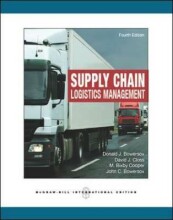Income and family farms
8 important questions on Income and family farms
Suppose a farm. Is the household income from this farm equal to the value added created by agricultural activities on that farm?
luctuations in income in dairy farming are smaller than in pig farming and horticulture in the EU. What is the explanation for this?
In The Netherlands there is a saying ‘farmers live poor but die rich’. Explain this saying.
- Higher grades + faster learning
- Never study anything twice
- 100% sure, 100% understanding
Mention the advantages and disadvantages of family farms compared to non-family farms (e.g. large commercial firms).
How agricultural specific are these advantages and disadvantages? Are they also relevant in other industries?
Organic farming. Organic farms are mixed farms (both arable farming and livestock production) that do not use chemical crop protection products and artificial fertilisers. In general organic farms are land and labour intensive.
Pig fattening. Pig fattening can be computerised and automised completely
Ornamental plant growing. Ornamental plant production can be, and already is too a large extent, computerised and automised and labour division is possible.
The question on the page originate from the summary of the following study material:
- A unique study and practice tool
- Never study anything twice again
- Get the grades you hope for
- 100% sure, 100% understanding
































